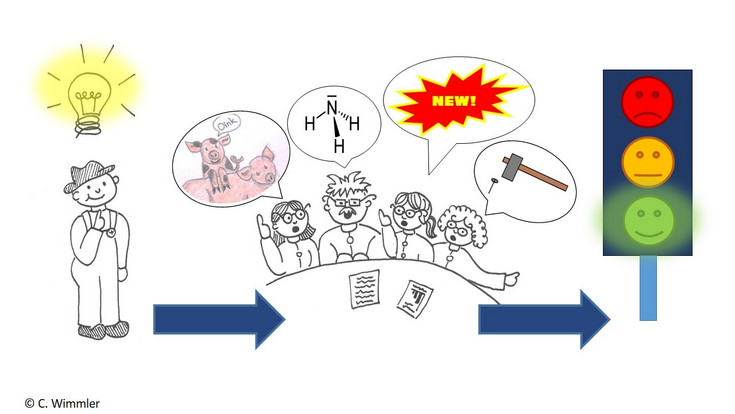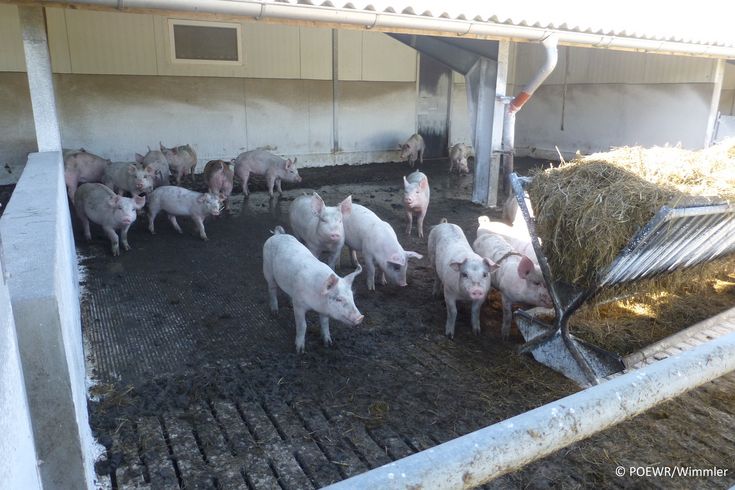Concrete Outdoor runs for Organic Growing-Finishing Pigs: Characteristics, Effects on Animal Welfare and Environmental Impact and Potential Improvements
SUPERVISOR: Christoph WINCKLER
PROJECT ASSIGNED TO: Cäcilia WIMMLER
Transition to sustainable food production requires the integration of ecological, eco-nomic and social concerns. Organic livestock production pursues the principles of sustainability putting equally emphasis on environmental soundness and social responsibility for the welfare of animals (IFOAM, 2005). Indeed, we expect organic farming to be a more natural and sustainable system considering a whole range of ecological, ethical and social concerns. The practical implementation of such “holis-tic principles” is though not straightforward.
This is also the case for organic pig production in Europe. Organic legislation re-quires the protection of the environment from harmful emissions and nutrient leach-ing as well as high animal welfare including opportunities for species-specific be-haviours such as foraging and rooting (Regulation (EU) 2018/848). However, main-taining low environmental impact and improving animal welfare do not always align (Llonch et al. 2017). Most organic fattening pigs in Europe are kept in indoor hous-ing with access to concrete outdoor runs (Früh et a. 2014). These systems have the advantage of good performance and efficiency and therefore seem beneficial in terms of resource use and environmental impact. The pigs, however, may have few-er opportunities to perform species-specific behaviour and consequently reduced welfare (Leeb et al. 2015). Moreover, poor hygiene due to increased pen fouling in the outdoor run and higher risk of ammonia emissions may be challenging in such systems (Ivanova-Peneva et al. 2008, Olsson et al. 2014).
A management and design of concrete outdoor runs for organic fattening pigs that considers pigs’ natural behavioural patterns, factors influencing emissions and practicability for farmers may contribute to a balanced and viable improvement of pig production towards sustainability.
Aims of the dissertation project:
1: To characterise concrete outdoor areas for organic fattening pigs in terms of animal behaviour and environmental impact by means of reviewing current scientific literature, organic legislation and standards across Europe as well as stakeholder input.
2: To identify specific innovations concerning the design and management of concrete outdoor areas which may influence animal welfare and environmental impact using by involving stakeholders and experts.
3: To test selected innovations in experiments on commercial organic pig farms in different countries regarding animal behaviour, pen hygiene and associated ammonia emissions.
The doctoral study is part of the ERAnet CORE Organic research project “Proven Welfare and Resilience in Organic Pig Production” (POWER). For further information, visit the website http://projects.au.dk/coreorganiccofund/research-projects/power/.

Fig. 1: Stakeholder driven identification of innovations to improve welfare and reduce ammonia emission in concrete outdoor.

Fig. 2: Concrete outdoor runs for organic fattening pigs in Denmark
References
Regulation (EU) 2018/848 of the European Parliament and of the Council of 30 May 2018 on organic production and labelling of organic products and repealing Council Regulation (EC) No 834/2007. Official Journal of the European Union pp. 1–92.
Früh B, Bochicchio D, Edwards S, Hegelund L, Leeb C, Sundrum A, Werne S, Wiberg S and Prunier A 2014 Description of organic pig production in Europe. Organic Agriculture 4: 83–92.
IFOAM International Federation of Organic Agriculture Movements 2005 Principles of Organic Agriculture. At: http://www.ifoam.bio/en/organic-landmarks/principles-organic-agriculture
Ivanova-Peneva SG, Aarnink AJA and Verstegen MWA 2008 Ammonia emissions from organic housing systems with fattening pigs. Biosystems Engineering 99: 412–422.
Leeb C, Butler G, Bochicchio D, Früh B, Illmann G, Prunier A, Rousing T, Urban J and Dippel S 2015 Final report for the CORE Organic II funded project ‘ ProPIG ’ - Farm specific strategies to reduce environmental impact by improving health, welfare and nutrition of organic pigs. Vienna
Llonch P, Haskell MJ, Dewhurst RJ and Turner SP 2017 Current available strategies to mitigate greenhouse gas emissions in livestock systems: An animal welfare perspective. Animal 11: 274–284.
Olsson AC, Jeppsson KH, Botermans J, Von Wachenfelt H, Andersson M, Bergsten C and Svendsen J 2014 Pen hygiene, N, P and K budgets and calculated nitrogen emission for organic growing-finishing pigs in two different housing systems with and without pasture access. Livestock Science 165: 138–146.
